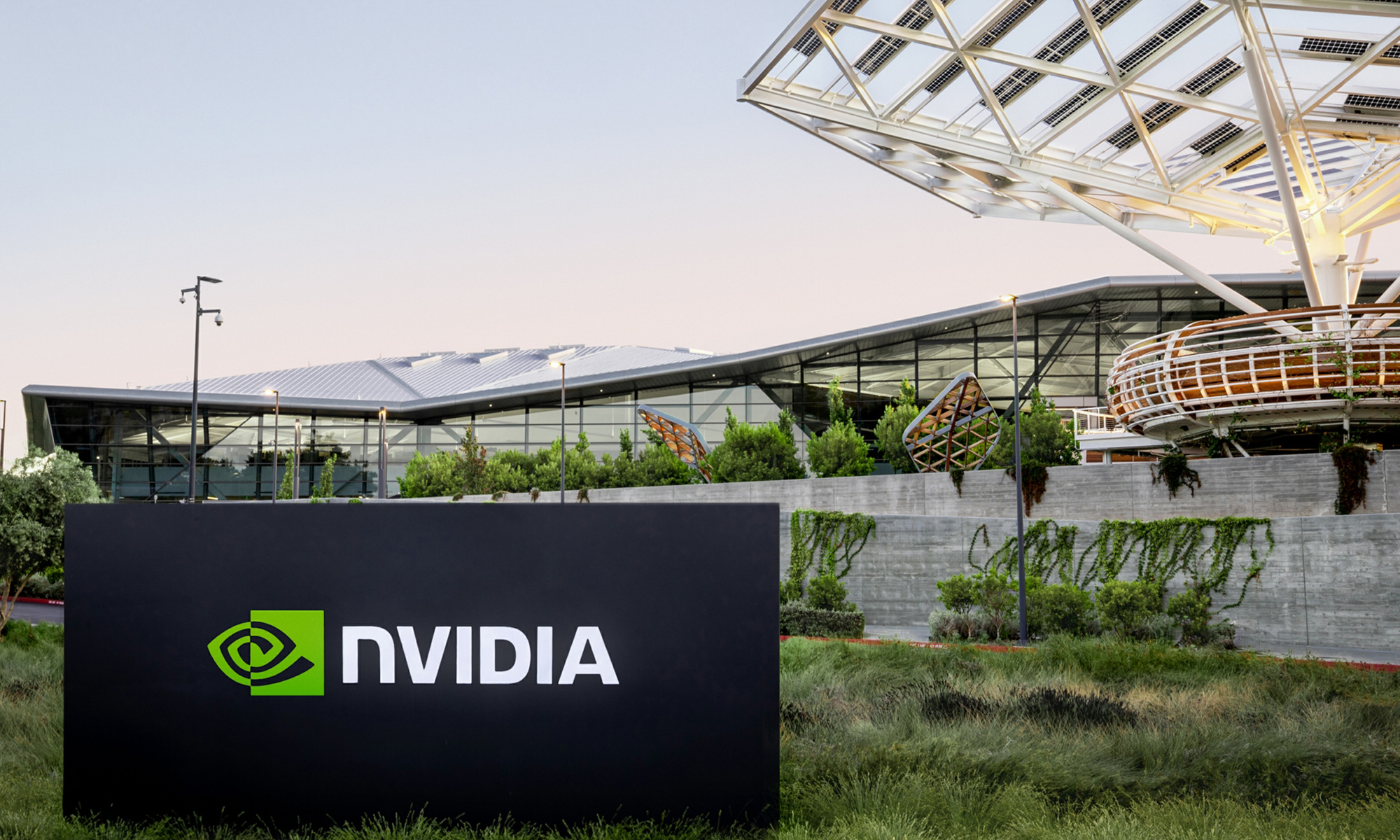The advent and proliferation of the internet in the mid-1990s was a can't-miss trend that captivated the attention of everyday investors. Since this moment, numerous other game-changing innovations have come along that have promised pie-in-the-sky addressable markets. This includes business-to-business e-commerce, genomics, 3D printing, and the metaverse, to name a few hot trends.
But over the last three decades, no trend has come particularly close to rivaling what the internet did for corporate America... until now.
The evolution of artificial intelligence (AI) looks to be the next leap forward for the tech industry and society as a whole. The vastness of this game-changing opportunity, which allows AI-empowered software and systems to make split-second decisions without human intervention, is reflected in PwC's estimate that AI will add $15.7 trillion to the global economy in 2030.
Image source: Nvidia.
A $15.7 trillion addressable market means a lot of companies are going to be winners, from hardware to actual application. However, no company has been a bigger beneficiary of the AI revolution than Nvidia (NVDA +0.99%).
The potential problem is that one of Nvidia's biggest perceived competitive advantages might also be its undoing.
Innovation comes first for Nvidia and CEO Jensen Huang
Since 2022 came to a close, shares of Nvidia have advanced by more than 870%, with the company tacking on over $3 trillion in market cap and completing a historic 10-for-1 forward split. Though Nvidia's aggregate percentage return has lagged Palantir Technologies, Nvidia's valuation soared quicker than any megacap stock in history.
Nvidia's outperformance is directly reflective of its ideal positioning in AI-accelerated data centers. The company's Hopper (H100) graphics processing units (GPUs) and successor Blackwell GPU have been the preferred options in high-compute data centers. In other words, there's a very high probability that Nvidia's hardware is behind the latest generative AI solutions and the training of most large language models.
Being at the leading edge of the hottest trend on Wall Street over the last three decades has its perks. With demand for AI-GPUs handily swamping supply, Wall Street's AI darling has been able to charge a veritable arm and a leg for its hardware. Last year, Nvidia's Hopper chip was flying off the shelves with a price tag north of $40,000. For the sake of comparison, Advanced Micro Devices was selling its Instinct MI300X series chips for between $10,000 and $15,000.

NASDAQ: NVDA
Key Data Points
The ability to charge a premium for its hardware sent Nvidia's gross margin soaring. After consistently producing a generally accepted accounting principles (GAAP) gross margin in the low-to-mid 60% range prior to the rise of AI, Nvidia saw its GAAP gross margin explode to as high as 78.4% in the fiscal first quarter one year ago (the company's fiscal year ends in late January).
But it can be argued that Nvidia's greatest competitive advantage is its innovation, which is led by CEO Jensen Huang.
Huang's aggressive ambition is to bring a next-generation AI chip to market on an annual basis. It began with the Hopper and Blackwell, and is expected to continue with the release of Blackwell Ultra in the latter-half of this year, Vera Rubin in the second-half of 2026, and Vera Rubin Ultra in the latter-half of 2027.
As you might have surmised, Vera Rubin and Vera Rubin Ultra will be running on a new processor, known as "Vera." This processor should be capable of doubling the processing performance of Blackwell Ultra, with considerably improved memory capacity and memory bandwidth than predecessor chips.
The key point being that Huang wants to keep Nvidia in its decisive leadership position on the compute front, which in turn should help the company charge a premium price for its hardware, relative to external competitors like AMD and China-based Huawei.

Nvidia CEO Jensen Huang delivering his GTC Keynote address in 2025. Image source: Nvidia.
Could Jensen Huang's accelerated innovation timeline be Nvidia's worst enemy?
For virtually all publicly traded companies, innovation is paramount to success. Huang's aggressive spending on research to develop faster and more-efficient AI-GPUs is something that Wall Street and investors would almost universally cheer.
But there's a very real possibility that Jensen Huang's accelerated innovation timeline may do more harm than good for his company. While it does appear that Nvidia will hang onto its compute advantages for the foreseeable future, there are far more considerations businesses have to take into account than just compute ability.
Imagine for a moment that you're a "Magnificent Seven" business and one of Nvidia's top customers that just dropped tens of billions of dollars on the company's hardware to cement your spot as an AI leader. Now imagine your AI-GPUs massively depreciating in value one or two years later because of Nvidia's accelerated innovation cycle. Are you really expected to drop $10 billion-plus every year or two for the latest chip? Highly unlikely.
What's interesting is that many of Nvidia's leading customers by net sales within the Mag-7 are internally developing AI-GPUs and solutions of their own. Though this hardware isn't going to externally compete against Hopper, Blackwell, or the company's successor chips, it'll be notably cheaper than Nvidia's GPUs. Further, since these internally developed chips aren't backlogged like Nvidia's chips, they'll be far more accessible. This points to Nvidia's largest customers by net sales delaying their upgrade cycles.
Nvidia's GAAP gross margin has come under pressure over the last year. NVDA Gross Profit Margin (Quarterly) data by YCharts.
We might also see Nvidia's largest revenue customers opt for older chips as they depreciate. Though Huang's entire premise of introducing a new GPU annually is to sustain his company's pricing power, his own accelerated development timeline could crater Nvidia's GAAP gross margin as businesses purchasing their own hardware -- not those leasing data center space -- trade down to less-costly but still quick alternatives.
Jensen Huang's aggressive innovation cycle is also potentially damaging to data-center leasing models, such as the newly public CoreWeave (CRWV 3.94%). Between 2022 and 2024, CoreWeave used extensive debt financing to acquire approximately 250,000 GPUs, many of which are Nvidia's Hopper chip. The value of these chips will likely depreciate rapidly with Wall Street's AI darling introducing an advanced GPU annually. Businesses wanting cutting-edge compute capabilities might pass on CoreWeave's data centers faster than investors might realize.
While there's no question that Nvidia's AI-GPUs are superior to the competition in compute ability, there's far more that goes into a business's purchasing decision. There's a very real possibility that Huang's own ambitious GPU innovation timeline acts as his company's own worst enemy in the years to come.






